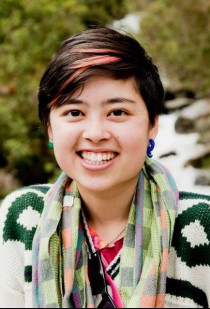My mentor Dr. Melissa Bird recently interviewed me as a part of her new Identity Series. You can watch the interview on youtube below, but she also asked me most of the questions in advance, which I responded to below the video. As she put it in her latest newsletter, some key takeaways from this episode include:
- How there is a human tendency to classify, and problems arise when violence is enacted based on taxonomy and structures.
- Why the knowing of ourselves and our histories can lead to a true listening practice with ourselves.
- That embodied knowing comes from coming together based on the things that bring us joy and create expansion.
- We should always manifest and embody the things that bring us true pleasure.
1. How have your many identities shaped you throughout your life?
I want to start with a story…my sweetie introduced me to the concept of “plantcestors” which are the plants our ancestors were in relationship with. One of his plantcestors he introduced me to is tamarind. They’re smooth pods on the outside, and when you open them they have these juicy, sweet and tangy amber fingers in them that are surrounded by this exoskeleton. There are several seeds in the center of each bulging area that affects the shape of the pod. So today I’m thinking about my identities shaping me being like these tamarind pod seeds. They each have these experiences that have built up around them, they’re sticky and connected to the other seeds or identities, and their fleshiness bulges out to the surface sometimes. Other parts of my identities are more subtle, and not as visible on the surface.
2. Why do you think that we are so concerned about classifying people into identities?
I have many ideas about this. I think about the violent obsession of racial capitalism that requires classification in order to give more to one group and less to the rest. This is an ongoing problem that justifies the dehumanization of people. It also is a problem of our binary thinking—the either/or thinking that gets people thinking, “well, you’re either black or you’re white” so that when you’re mixed race like me, you get the messaging that you’re “half this and half the other” like we’re math equations.
That said, I do think there’s a human impulse to categorize—I see this with my toddler who loves to point out the dogs, trucks, vans, and cars outside. I think this has supported us to be in relationship with our plant allies for example—like when we see poison oak, that’s a boundary, or when we see an abundance of figs on a tree, that’s an invitation to enjoy a few.
But the problem arises when we view identities as fixed, and as consumerist driven brands that we need to prove we belong to. For example, there was a time when I felt I needed to hide or downplay that I was dating men because I identified as queer.
3. What do you wish people understood about identity formation?
That if we do it in response to truly listening to ourselves, it could be a liberatory practice. I love Alice Walker’s encouragement in a recent talk to study and know ourselves and our histories. For me, Beautiful Scholarship, the method I developed to practice embodied study and research is so helpful because it keeps my body in the center of the work of study. This is something you’ve modeled and told me over and over again Missy, to listen to your body’s intuition.
4. What is the strength of understanding your multiple identities?
To me this question speaks to not just settling with the mono-culture identities that are offered by mainstream society. It means finding out exactly what is pleasurable to you, what you’re curious about, and finding the people who are doing things that inspire the heck out of you. The strength then of understanding these many identities that we all have is of feeling rooted in our own bodies which are an extension of our ancestor’s and descendant’s bodies and stories, of feeling rooted in where we live, and in all our relations with other humans and the more-than-human worlds. Feeling rooted leads to feeling like I belong…which reminds me of Shug in The Color Purple talking about God. She says it (because God isn’t a he or a she, but an it) came to her one day when she was sitting quiet, “that feeling of being part of everything, not separate at all. I knew that if I cut a tree, my arm would bleed. And I laughed and I cried and I run all around the house. I knew just what it was.” That sounds pretty darn amazing to me, and strong and beautiful.
5. What is your favorite book/show/podcast about one of your identities?
Ornamentalism by Anne Anlin Cheng is the latest book I’m jazzed about. It’s actually the first time I’ve read Asian feminist theory. Not just feminist theory written by an Asian scholar, but a theoretical framework that theorizes the specific nuances of Asiatic femininities. And yet it is in conversation with Black feminist theory, which is my first feminist theory home, so I’m feeling very excited about it.
xx
Miyuki

